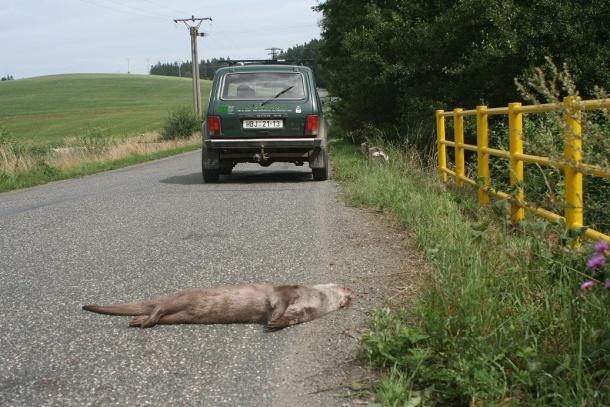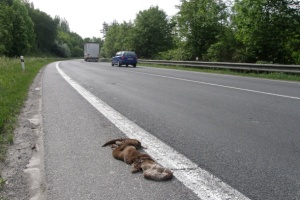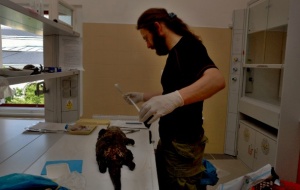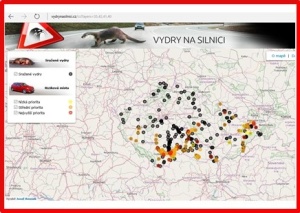Otters on roads

Many otters (Lutra lutra) are killed on the roads each year, negatively affecting the population. For other animal species, roads can create an impenetrable barrier fragmenting the population. But this is not the case with the otter. The major issue is otter road mortality. According to our own data, the number of otter road casualties increases every year in the Czech Republic. And that is an issue in all Czech regions. Appropriate measures can be taken to reduce the number of otters killed on existing roads, but these may be expensive and it is important to consider the costs as well as the benefits. However, many mitigation measures can be easily implemented, involving creating safe, dry routes under roads. Usually, underpasses and culverts can be adjusted using wooden benches or other relatively simple technical solutions. Such safe underpasses serve not only otters, but also other animal species, migrating along the rivers.
Monitoring otter road casualties

The number of recorded dead otters increases every year. At present, about 50 carcasses are recorded yearly; out of these 80 percent are cases of vehicle-induced mortality. The reasons why the numbers increasing are a) increase in road traffic intensity, b) otter population increases, c) increased public involvement in road casualty monitoring.
Otter mortality research

The results of otter mortality research up to year 2011 have been published in English and are available here: Causes of deaths of Lutra lutra in the Czech Republic
Online map application
 ALKA
Wildlife has recently launched an online map presenting otter road
mortality records and critical places for otters on roads. It is
designated for professional public use, such as by road construction
authorities and nature conservation authorities.
ALKA
Wildlife has recently launched an online map presenting otter road
mortality records and critical places for otters on roads. It is
designated for professional public use, such as by road construction
authorities and nature conservation authorities.




